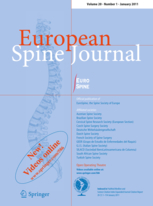
Spine
Intraoperative 3D imaging vs. conventional navigation for pedicle screw placement accuracy
Eur Spine J. 2016 Jun;25(6):1738-44.143 patients scheduled for spine surgery were randomized to undergo the procedure with either computer-assisted 3D intra-operative imaging or conventional 2D imaging with the aid of anatomical landmarks. The purpose of this study was to determine if 3D imaging resulted in significantly improved pedicle screw placement accuracy and reduced radiation exposure while maintaining similar operative times when compared to conventional methods. Results demonstrated that accuracy and operative time were comparable between groups when all patients were considered. In subgroup analysis, patients who underwent open surgical procedures with 3D imaging had significantly improved screw placement accuracy, but significantly increased radiation exposure and running time for pedicle screws.
Unlock the full article
Get unlimited access to OrthoEvidence with a free trial
Start TrialCritical appraisals of the latest, high-impact randomized controlled trials and systematic reviews in orthopaedics
Access to OrthoEvidence podcast content, including collaborations with the Journal of Bone and Joint Surgery, interviews with internationally recognized surgeons, and roundtable discussions on orthopaedic news and topics
Subscription to The Pulse, a twice-weekly evidence-based newsletter designed to help you make better clinical decisions
Exclusive access to original content articles, including in-house systematic reviews, and articles on health research methods and hot orthopaedic topics
Or continue reading this full article
Register Now

Subscribe to "The Pulse"
Evidence-Based Orthopaedics direct to your inbox.




































